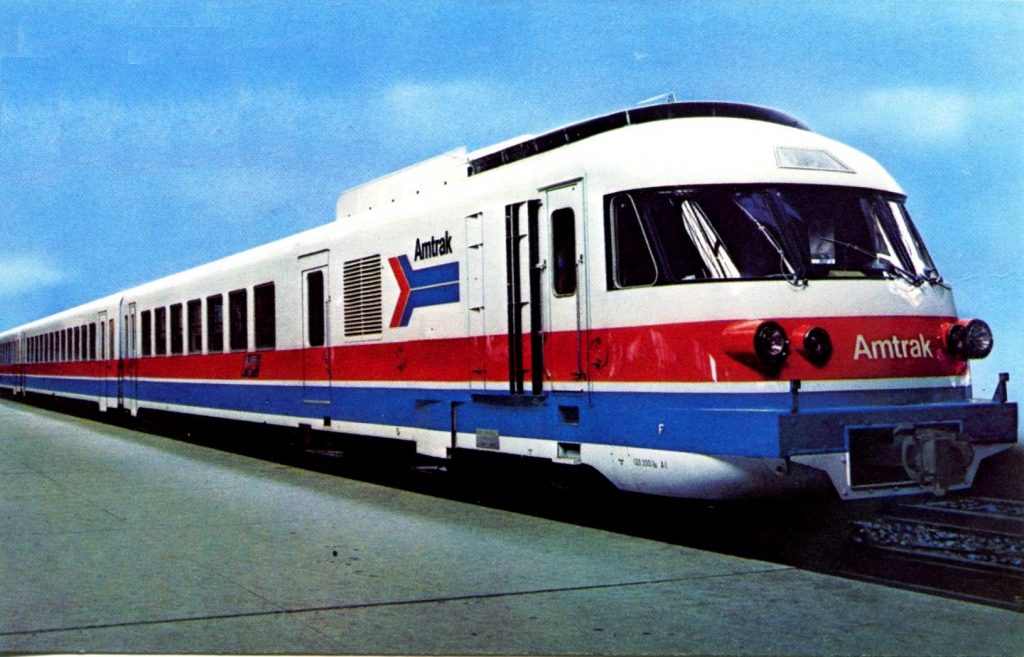
A Fifty-Year History of Amtrak in Michigan
As part of its national rollout, Amtrak started service in Michigan on May 1, 1971, with two daily trains offering day-coach service on 281 miles of the Penn Central between Chicago and Detroit. This line was once part of the Michigan Central, with many direct Chicago-Detroit-Buffalo-New York City limited’s carrying sleepers, diners, coaches, and parlor cars on fast schedules. However, passenger services on the Grand Trunk and the Chesapeake and Ohio, the other two surviving passenger routes in Michigan, were discontinued.
In 1974 passenger service supported financially by the Michigan Depart of Transportation (MDOT) returned to the 319-mile portion of the Grand Trunk between Chicago and Port Huron as the Blue Water Limited. In a few months, a connection was installed at Battle Creek to shift the train west of Battle Creek to the Penn Central route via Kalamazoo to Chicago.
Also in 1974, The New York-Niagara Falls Empire State Express was extended west about 211 miles from Niagara Falls, New York, through Canada to Detroit, approximating one of the Penn Central trains discontinued in 1971. In 1976 the train was renamed The Niagara Rainbow. It crossed the Niagara Gorge on the large Michigan Central Bridge and ran over the Canada Southern before passing through the Detroit River tunnel to its final stop at Detroit’s Michigan Central Station.
In 1975, Amtrak added a third round trip on the Detroit-Chicago route and began using attractive French-built “Turboliners.” A glitzy advertising program was initiated and the new trains became very popular and greatly increased ridership on the route. Although the Turboliners were capable of 125 MPH speeds, the unsuitable condition of the tracks and signal system limited them to 79 MPH.
In 1975 the single Budd car, which remained as a commuter service from Michigan Central days between Ann Arbor and Detroit, was taken over by Amtrak. As the Michigan Executive it was upgraded to an engine and several coaches and operated in commuter service between Jackson and Detroit, a distance of 74 miles.
In 1980, one of the Chicago-Detroit trains was extended 57 miles south from Detroit to Toledo. The train was renamed The Lake Cities and offered a direct connection at Toledo to and from east coast destinations served by the Lake Shore Limited and Capital Limited.
In 1982, the Blue Water was extended from Port Huron 172 miles to Toronto and renamed The International. The train was jointly operated by Amtrak and Via Rail Canada using the equipment of both companies and became quite popular for Chicago-Toronto travelers.
In 1984 Amtrak service, again supported financially by MDOT, returned passenger trains to the Chesapeake and Ohio Railroad (today CSX) on the 176-mile route between Chicago and Grand Rapids. Unlike the C&O trains that had been discontinued in 1971, the new service did not cover the remaining 153 miles to Lansing and Detroit. The new train was rerouted off the C&O route west of Porter, Indiana, and instead followed the former Penn Central (now Norfolk Southern) route to Chicago with the other Amtrak trains.
In 1995, the Chicago-Detroit trains were extended 23 miles from Detroit to Pontiac to serve the growing northwestern Detroit suburbs. The Lake Cities was also shifted from a Toledo destination to a Pontiac destination.
Today, unfortunately, some of these improvements have been undone. The Niagara Rainbow to New York City, which offered so much promise, was discontinued in 1979. The Michigan Executive was discontinued in 1984, leaving Detroit without a single commuter train. (The seed that this train represented for a commuter train system so badly needed in Detroit was lost.) The Lake Cities service to the connections at Toledo was discontinued in 1995 when all of the Chicago-Detroit trains were extended to Pontiac. The International was discontinued east of Port Huron in 2004, due to lengthy customs delays at the international border. The train continued to operate on the former segment between Chicago and Port Huron and became the Blue Water once again.
The result is that today Amtrak provides three daily round-trip trains between Chicago and Detroit/Pontiac (the same as the last Penn Central schedule of 1971), one daily round trip to Port Huron, and one daily round trip to Grand Rapids. All of these trains are scheduled primarily for travel to and from Chicago.
Although the number of trains operated remains low, there have been other long-term improvements. In 1976, Amtrak purchased 90 miles of track between Porter, Indiana, and Kalamazoo from the Penn Central. In 2012 MDOT purchased 135 miles of the railroad between Kalamazoo and Dearborn. The combined 215 miles are now in passenger-friendly ownership, representing about 75 percent of the 281 miles between Chicago and Detroit. The track is now operated by Amtrak and, along with the signal system, has been extensively rebuilt. The national passenger reservation system has been upgraded several times so that reservations can be made by passengers themselves. Although most of the railroad ticket agents at the stations in Michigan are gone, many of the surviving station buildings have been replaced or restored to historically correct standards.
Let us hope that during the next 50 years, our descendants will finally see the development of trains that are modern, fast, reliable, and frequent enough to provide meaningful transportation alternatives.
